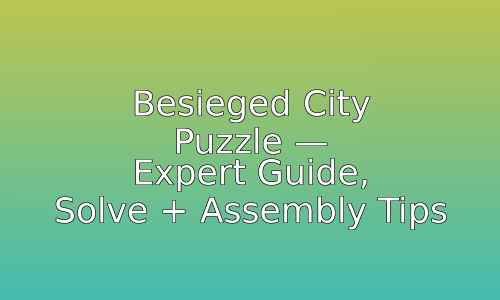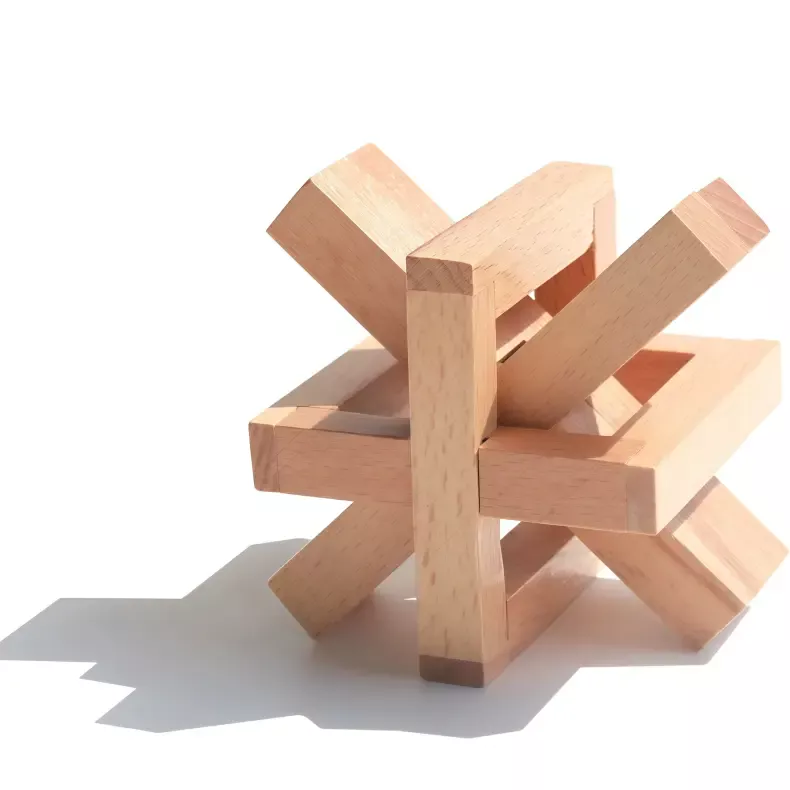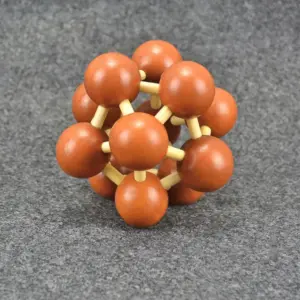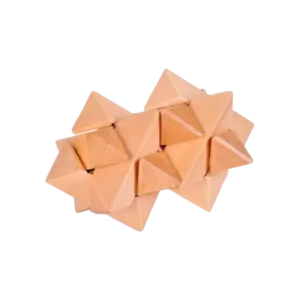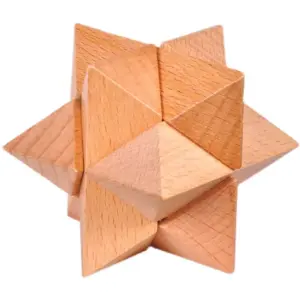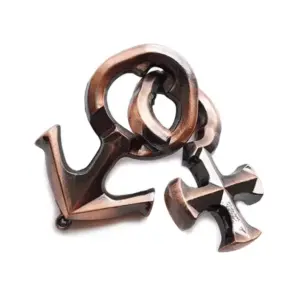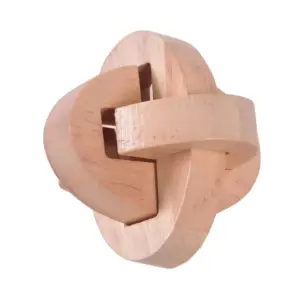If you love tactile brainteasers and handcrafted wooden puzzles, this is the deep-but-readable guide you want. I’m writing as a toy-and-mechanical-puzzle expert: clear identification of parts, a practical step-by-step disassembly and assembly walkthrough, troubleshooting, and a few pro tips to keep this puzzle performing like new. I’ll also explain why the famous spin trick works — in plain language.
Besieged City
- Premium Construction, Profound Wisdom: Features the exact mechanism that challenged Emperor Taizong, embodying the idea that “great fullness appears empty, yet its use is inexhaustible,” proving the best solutions often hide in plain sight.
- Develop Mind & Patience: Hones spatial reasoning through ancient engineering, teaching the timeless truth that “great straightness seems bent”—a reminder that the most direct path isn’t always the most obvious one.
Short historical note
The Besieged City puzzle is often presented with a little Tang-dynasty lore — a brainteaser credited to Wei Zheng and said to have stumped Emperor Taizong. The historical names add flavor and explain why the puzzle is often sold with a story card or decorative packaging; it’s part of the appeal.
What it is — parts, shapes, and a quick inventory
According to the video solution and hands-on breakdown, the toy is a compact wooden cage puzzle made from six pieces:
- Cage frame (1 piece) — a hollow cubic/“井” (grid) style frame formed by four long slats that interlock into a square/box outline. It holds the pins and cross core.
- Pins / sticks (2 identical pieces) — long rectangular sticks with a U-shaped groove in the middle, two small holes on each side, and an internal hollow with two movable locking pins. Those pins normally stick out through the side holes to lock into the cage.
- Cross pieces (3 identical cross-bars) — three slotted bars that interlock at 90° to form the internal cross core; they stabilize the whole assembly and give the puzzle its 3D skeletal structure.
Total: 6 wooden elements — cage + 2 pins + 3 cross pieces. This construction mirrors a family of “caged” puzzles where a core is locked by pins that can be retracted by motion. (See similar cage puzzle solutions and demos for reference.)
The core trick — why the spin works (plain physics)
The core mechanism is elegantly simple: the two internal locking pins are spring-biased or gravity-assisted so that when stationary they protrude and engage the circular holes in the cage. When you spin the pin rapidly about the puzzle’s central axis, centrifugal force makes the pins retract slightly (they’re free to move inward), so they no longer catch the cage’s holes. That temporary retraction releases the pin and lets you slide the stick out. Stop spinning, and the pins spring back — you’ve got yourself a lock again.
In short: spin → pins retract → pull out stick → spin other stick → done. This is the exact motion described in the video solution and in classic “hedgehog / cage” puzzle families.
Step-by-step: how to disassemble (safe, recommended method)
Prep: work on a smooth, flat table. No tools, no brute force.
- Put the whole puzzle upright on a flat surface so the cross core axis is vertical.
- Grip the top and bottom (either the ends of the cross pieces or the cage frame) firmly but lightly.
- Spin the puzzle with a quick, confident wrist flick (clockwise or counterclockwise is fine). The goal is a short, sharp spin — you don’t need an hour of twirling.
- Immediately after the spin, while the pins are still retracted, gently pull one of the long sticks straight out. It should slide free with little resistance.
- Repeat the spin for the second stick. Pull it out when the pins are retracted.
- With the sticks removed, slightly shift angle and slide one cross piece lengthwise; once one moves, the others will loosen and can be removed sequentially.
- You’ll end up with all six pieces separated.
Expert tip: if a pin feels sticky, give the puzzle a short spin and a quick side-to-side wiggle — timing matters. Don’t bend or pry; the design expects clean linear motion.
Step-by-step: how to assemble (fast, neat, repeatable)
- Build the cross core first: slide the three slotted cross pieces together at right angles so they tightly interlock. That gives you the internal skeleton.
- Place or orient the cage frame so its openings line up with the intended stick insertion points.
- Take one stick, spin it briefly on the table to retract its pins, then insert it into the cage opening. Give the stick a small left-right wiggle so its pins pop out and engage the cage holes.
- Do the same for the second stick.
- Slide the cage onto the cross core, aligning slots and corners; a small press will seat everything into place.
- Give the assembled puzzle a gentle shake to confirm both sticks are locked.
Pro tip for repeat demonstrations: practice a short, confident spin and a smooth pull — that rhythm sells the reveal in videos and demonstrations.
@teasipcom Watch the Besieged City Puzzle get beat by a spin trick! 🤯 ♬ original sound – Tea-sip
Maintenance & care (what to do to keep it smooth)
- Keep the wood dry and avoid extreme humidity changes.
- If action feels sticky, a tiny dab of dry wax (like beeswax) on moving parts will help — no oil.
- Avoid forcing pieces. If something binds, check alignment and try the spin/wiggle routine.
- Store in a small pouch or box to avoid nicks.
Who should buy this and positioning for marketing
- Casual puzzlers: easy entry, satisfying reveal.
- Gift buyers: compact, tactile, and rich in story (historical hook sells).
- Educators / demonstrators: great tactile tool for “physics in a pocket” demos.
- Collectors: a nice piece for a shelf of mechanical curiosities — especially if finished wood and tight tolerances are present.
Short FAQ
Q: Is it fragile?
A: No — it’s designed for hands-on play. Treat it like a careful fidget, not a hammer.
Q: Does size matter?
A: The compact size is intentional. Some users with large hands prefer a bigger version; that’s a valid variant request.
Q: Why no tools?
A: The puzzle is explicitly about indirect motion (spin/centrifugal), not brute force or tools — that’s the point and the charm.

